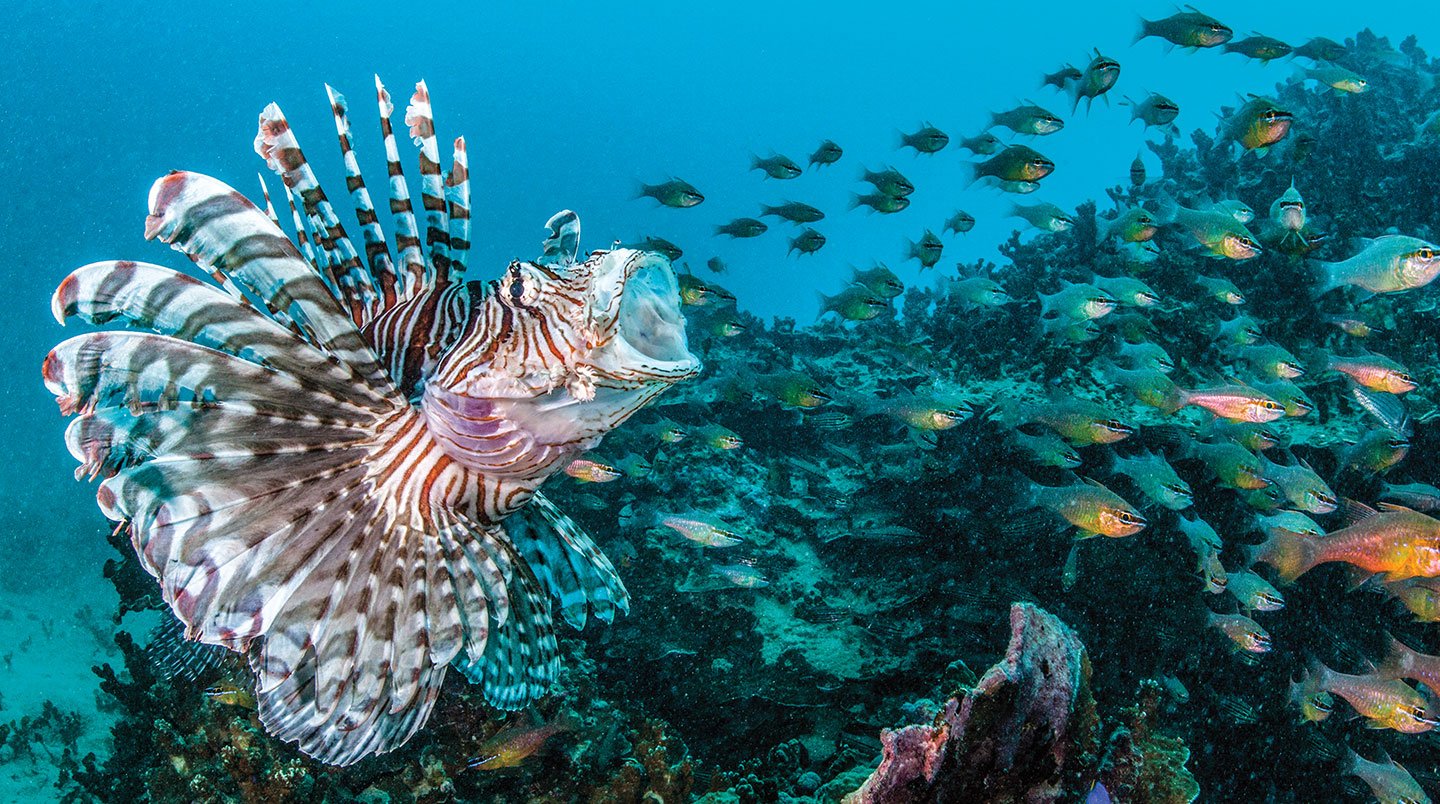You move slowly, with the confidence of a king. You destroy any animal that crosses your path. Your hunger is insatiable—you eat and eat and eat. And you prefer to sneak up on your dinner until—BAM! You swallow it whole.
So what are you?
A shark? A grizzly bear? A monster from a fairy tale?
No. You are a lionfish—about the size of a football.
And right now, you are causing a disaster in our seas.
You move slowly, with the confidence of a king. You destroy any animal that crosses your path. Your hunger is insatiable: You eat and eat and eat. You sneak up on your dinner until—BAM! You swallow it whole.
So what are you?
A shark? A grizzly bear? A monster from a fairy tale?
No. You’re a lionfish. You’re about the size of a football.
And right now, you’re causing big problems in our seas.
You move slowly, with the confidence of a king. You destroy any animal that crosses your path. Your hunger is insatiable—you eat and eat and eat. And you prefer to sneak up on your dinner until—BAM! You swallow it whole.
So what are you—a shark, a grizzly bear, a monster from a fairy tale?
No. You are a lionfish—about the size of a football.
And right now, you are causing a disaster in our seas.

